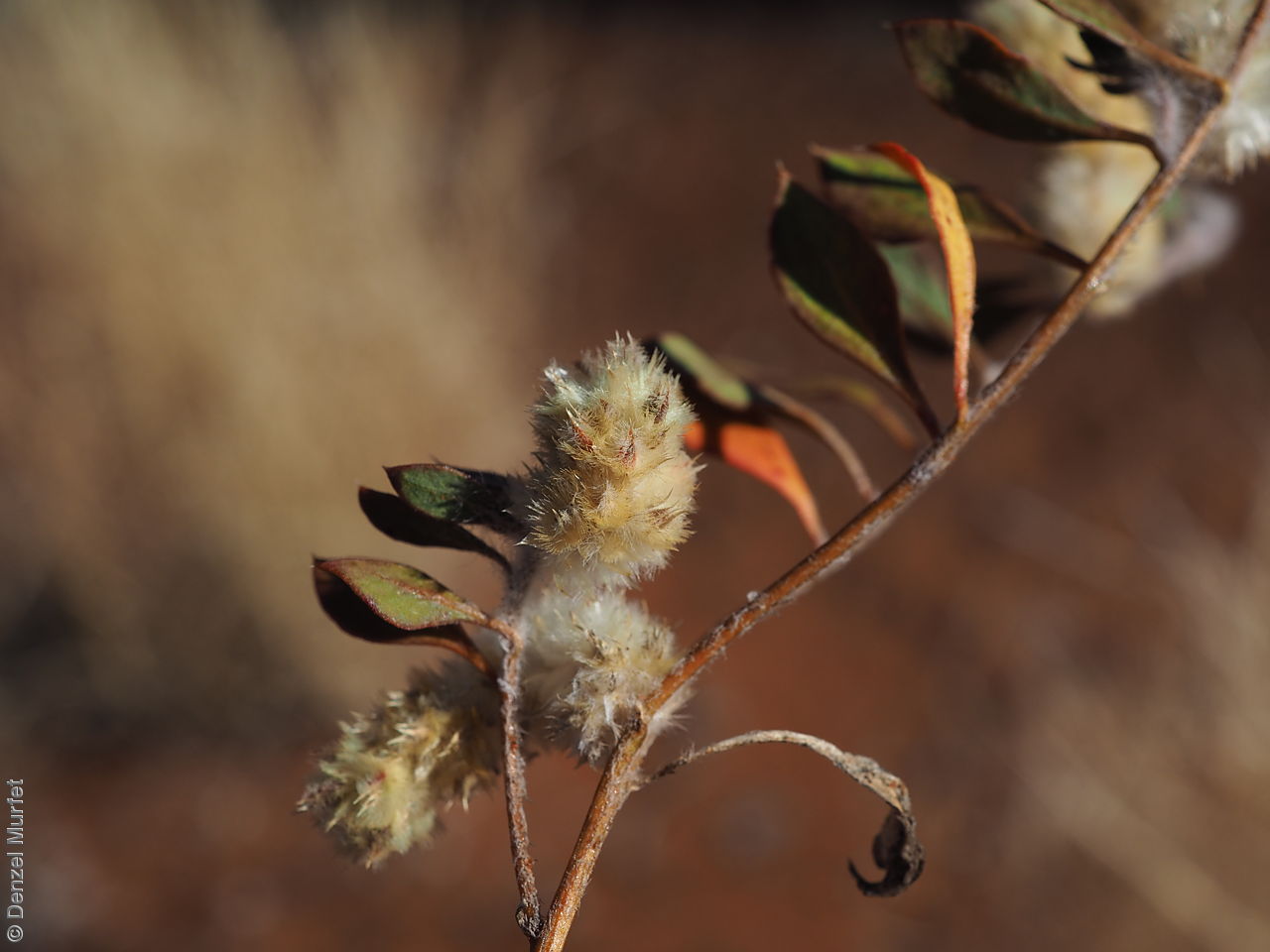












Prior names
Trichinium aervoides
Common names
Mat Mulla Mulla
Etymology
Ptilotus from the Greek 'ptilotos' meaning feathered or winged; referring to the hairy flowers. Aervoides means resembling plants in the genus Aerva.
Distribution and status
Found in the far north-west corner of South Australia, growing on clay or ironstone gibber, on Mitchell grass stony plains. Also found in Western Australia and the Northern Territory. Native. Rare in South Australia. Uncommon in the Northern Territory. Common in Western Australia.
Herbarium region: North Western
AVH map: SA distribution map (external link)
Plant description
Prostrate herbs to 4 cm high and 70 cm wide with stems sometimes reddish, densely hairy, glabrescent with age. Leaves obovate, ovate or subspathulate, sparsely hairy, glabrescent with age, basal leaves to 60 mm long and 20 mm wide. Inflorescences mostly axillary, ovoid or cylindrical, to 3 cm long with up to 40 green or cream to brown flowers covered in dense hairs. Flowering between April and October. Fruits are pale brown, cylindrical fruit-head containing numerous long papery and hairy fruits, each containing one seed. Seeds are brown, reniform. Seed embryo type is peripheral.
Seed collection and propagation
Collect seeds between September and December. Be very careful when collecting this species as the fruits contain fine hairs that may cause an allergic reaction for some people. Collect the fruit heads when dried to a pale straw colour. Each fruit should come off the head easily when fingers are rubbed up the stem. Collect more fruits than required as not all fruits contain viable seed. Be very careful when cleaning this species as the fruits contain fine hairs that may cause an allergic reaction for some people. To clean, rub the fruit heads gently to dislodge the seed at the base of each fruit. Use a sieve to separate the unwanted material. Store the seeds with a desiccant such as dried silica beads or dry rice, in an air tight container in a cool and dry place.